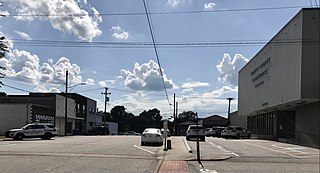
Yadkinville is a town in Yadkin County, North Carolina, United States. The population was 2,995 at the 2020 census. Located in the Piedmont Triad, it is the county seat and largest city of Yadkin County.
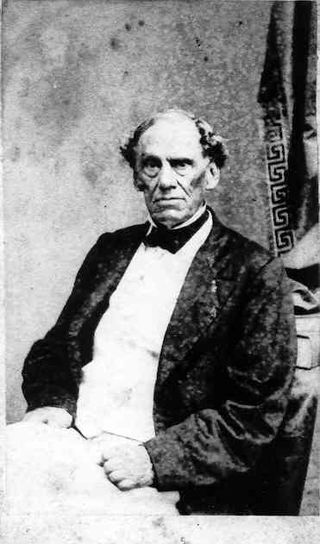
Bedford Brown was a Democratic United States Senator from the State of North Carolina between 1829 and 1840.
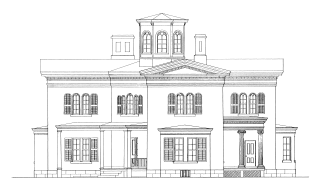
Cooleemee, also known as the Cooleemee Plantation House, is a house located between Mocksville and Lexington, North Carolina, at the terminus of SR 1812 on the Yadkin River in Davie County, North Carolina. It is a U.S. National Historic Landmark, designated in 1978 for its architecture.
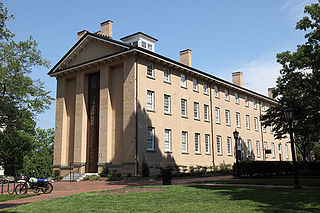
Old East is a residence hall located at the north part of campus in University of North Carolina at Chapel Hill. Built in 1793 by slave labor, it became the first state university building in the United States. The Wren Building at the College of William & Mary in Williamsburg, Virginia, was built in 1695, but William and Mary did not become a public university until 1906.

This is a list of structures, sites, districts, and objects on the National Register of Historic Places in North Carolina:
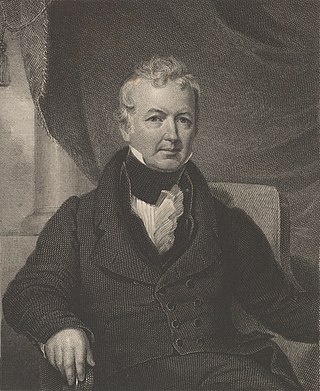
William J. Gaston was a jurist and United States Representative from North Carolina. He was the author of the official state song of North Carolina, "The Old North State". Gaston County, North Carolina, created just after his death, was named for him, as later were the city of Gastonia, North Carolina, artificial Lake Gaston, and the Gaston Hall auditorium at his alma mater, Georgetown University.
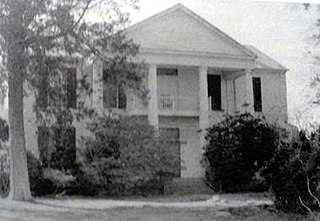
Cedar Haven was a historic Greek Revival plantation house located near Faunsdale, Alabama. It was built in 1850 by Phillip J. Weaver. Weaver was a prominent merchant and planter. He was born in Mifflintown, Pennsylvania in 1797 and relocated to Selma from Uniontown, Maryland in 1818. He ran a very successful store in Selma and also maintained a home there. Weaver was the paternal grandfather of the artist Clara Weaver Parrish.

This list includes properties and districts listed on the National Register of Historic Places in Wilson County, North Carolina. Click the "Map of all coordinates" link to the right to view a Google map of all properties and districts with latitude and longitude coordinates in the table below.
William Wilson House may refer to:

The Cherry Hotel is a historic hotel building located at Wilson, Wilson County, North Carolina. It was designed by Charles Collins Benton in Beaux Arts style and built in 1917. It is a six-story, "U"-shaped brick building with approximately 200 rooms. The interior features a two-story lobby with Art Deco style lighting fixtures. The hotel closed in 1981. It was subsequently converted to apartments.

The William Jennings Bryan House is a historic home located at 107 Evelyn Pl. in Asheville, Buncombe County, North Carolina. It was designed by architects Smith & Carrier and built in 1917. It is a two-story, five-bay, side-gable roofed dwelling in the Colonial Revival style. This was the home of William Jennings Bryan from 1917 until he sold the house in 1920.

The William R. Davie House, on Norman St. in Halifax, Halifax County, North Carolina, is a historic house with significance dating from 1783. William R. Davie (1754–1820) was born in England. He was a Founding Father of the United States and a patriot officer of mounted troops in the American Revolution who attended the Constitutional Convention from North Carolina, served as governor of North Carolina, served as a special ambassador to France during the XYZ Affair, and served in the North Carolina legislature. The house, also known as Loretta, was built on five acres that Davie bought in 1783. It was built starting probably in about 1785. It is a large two-story, frame side-hall plan house beneath a gable roof. It has a two-story wing raised from an earlier one-story wing and a number of one-story rear additions. The house is sheathed in weatherboard and rests on a brick foundation.

North Carolina Polytechnic Academy, founded as Hillsborough Military Academy and also known as North Carolina Military Academy, was a school in Hillsborough, North Carolina. Col. Charles C. Tew CSA founded Hillsborough Military Academy. He was later killed in action at Battle of Antietam in 1862 on the eve of his promotion to brigadier general. Architect John A. Kay designed the Hillsborough Military Academy barracks building and commandant's house. Edmund Strudwick was the doctor for the Hillsborough Military Academy in the 1860s and cared for soldiers wounded in the Civil War at his home nearby.

Lucy and J. Vassie Wilson House is a historic home located at High Point, Guilford County, North Carolina. It was built in 1926, and is a two-story, three-bay, Colonial Revival style brick dwelling. It has a tile hipped roof, porte-cochère, and features a semicircular columned porch supported by four columns with stylized Corinthian order capitals. Also on the property is a contributing three-car brick garage.
Eugene Wilson Hodges Farm is a historic home, farm, and national historic district located near Charlotte, Mecklenburg County, North Carolina. The district encompasses four contributing buildings, one contributing site, and five contributing structures in rural Mecklenburg County. The Eugene Wilson Hodges House was built about 1908, and is a two-story, three-bay I-house with two parallel one-story rear ells. It has a slate triple-A roof and two exterior, stuccoed-brick chimneys. It features a vernacular Colonial Revival hip roofed wraparound front porch with Doric order columns. Other contributing resources include two chicken coops, a wellhouse, barn, two granaries, two silos, and the agricultural landscape.

William J. Hawkins House, also known as Oakley Hall, is a historic plantation house located near Ridgeway, Warren County, North Carolina. It was built about 1855, and is a two-story, three bay by two bay, Greco-Italianate style frame dwelling. It has a hipped roof with deep overhang and brackets and sits on a basement. The house's design and ornamentation reflect the influences of local builder Jacob W. Holt.
Woodard Family Rural Historic District is a national historic district located near Wilson, Wilson County, North Carolina. It encompasses 29 contributing buildings in a rural area near Wilson. The district developed between 1830 and 1911 and includes notable examples of Colonial Revival and Greek Revival style architecture. Notable buildings include the William Woodard House, the Woodard House, William Woodard Jr. House, and Elder William Woodard Sr. House.

Davis-Whitehead-Harriss House is a historic home located at Wilson, Wilson County, North Carolina. It was built in 1858, and renovated in 1872 in the Italianate style. It is a two-story, three bays wide, "T"-plan, frame dwelling, with a rear ell. It has single-shouldered, brick end chimneys with stuccoed stacks and a one-story, hipped roof front porch. Also on the property is a two-story frame carriage house built in 1925.



















